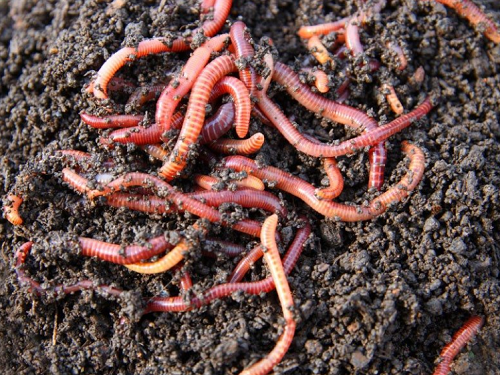
Exhibition time: 17-19 March, 2026 Shanghai, China
 中文
中文

Exhibition time: 17-19 March, 2026 Shanghai, China
 中文
中文
In a supportive environment with plenty of food, worms can turn leaves and other waste products into a nutrient-rich amendment for your garden. Worms eat and digest rotting leaves and break them down into a nutrient rich fertilizer known as vermicompost. One of the main advantages of vermicomposting over traditional heap composting is that the digestive process of worms slows the breakdown of the compost, creating a natural slow-release fertilizer.

Worm Castings
The waste product that worms leave after digesting rotten leaves or another form of organic waste is commonly known as worm castings. The castings create a usable fertilizer that provides low concentrations of basic nutrients to the soil. These castings contain nitrogen, potassium, phosphorous, calcium and magnesium. Worm castings also contain beneficial microbes and improve the structure of your soil, allowing it to hold more water without becoming saturated. In most cases, vermicompost contains five to 11 times more nutrients in chemical form that plants can use immediately than unfertilized soil.

Vermicomposting
Vermicomposting is the process of using worm to digest organic matter such as leaves into a valuable fertilizer. This process deodorizes and neutralizes the pH of the organic matter the worms consume. Worm castings also introduce chemicals into the soil known as auxins and cytokins. These chemicals help promote the growth of plants along with the elevated levels of nutrients. The digestion process also breaks down the organic matter in rotting leaves into a finely textured substance. This finer texture allows microbes to further break down organic matter such as rotted leaves more easily. The organic carbon contained in vermicompost also causes plant nutrients to release into the soil slowly, creating a natural form of slow-release fertilizer.
Using Worms
Red worms are often used for worm composting because they are better adapted to composting rotting materials such as leaves or food waste. In order for worms to successfully compost your leaves they require dark conditions and a steady temperature between 55 and 77 degrees Fahrenheit. In most cases 1 pound of redworms can eat between 1 and 2 pounds of organic waste per day.
Considerations
Adding the right amount of leaves ensures that the worms can eat them before they begin to rot and decay. In most cases shredded leaves perform better than whole leaves since they pack more densely into a box and create a habit that the worms can easily move through. Leaves are a relatively poor source of nutrients for vermicompost but they make an excellent source of bedding for the worms. You can add rotted fruits and vegetables to the rotting leaves in your worm bin to improve the nutrient content of your vermicompost.
